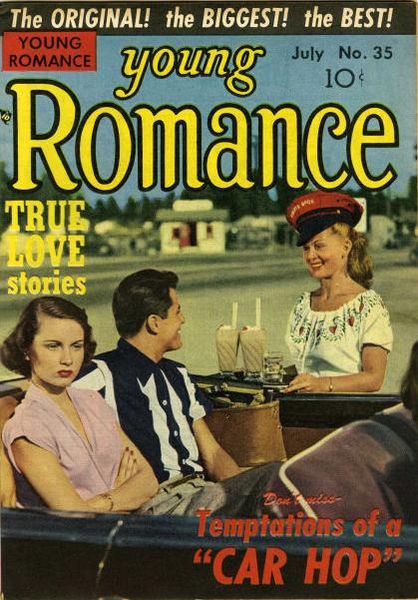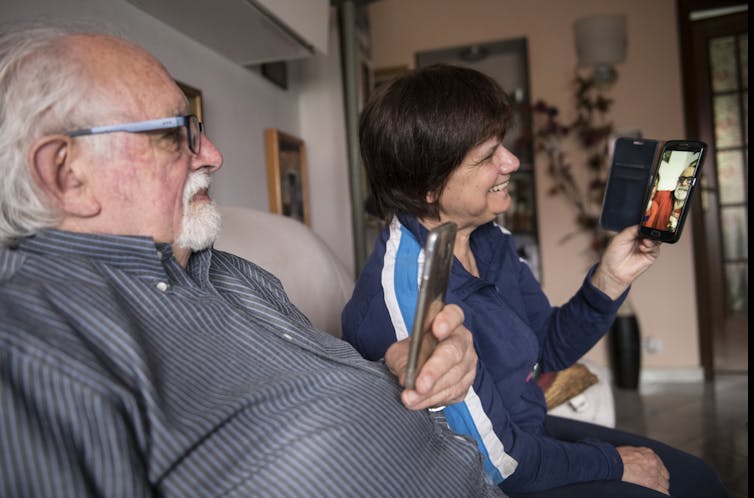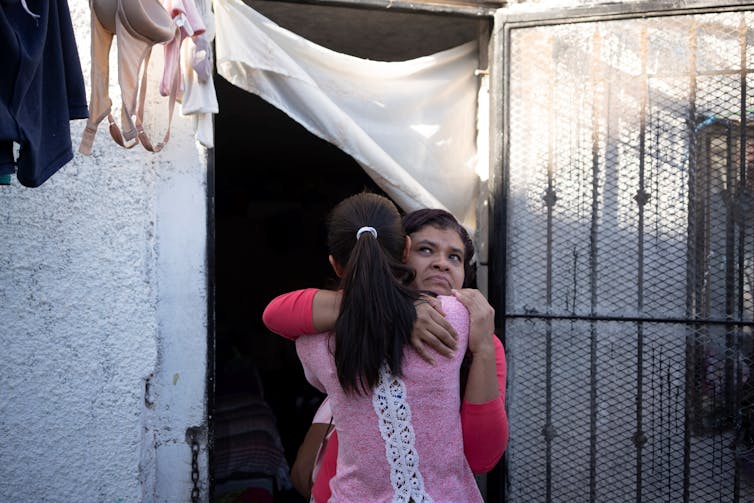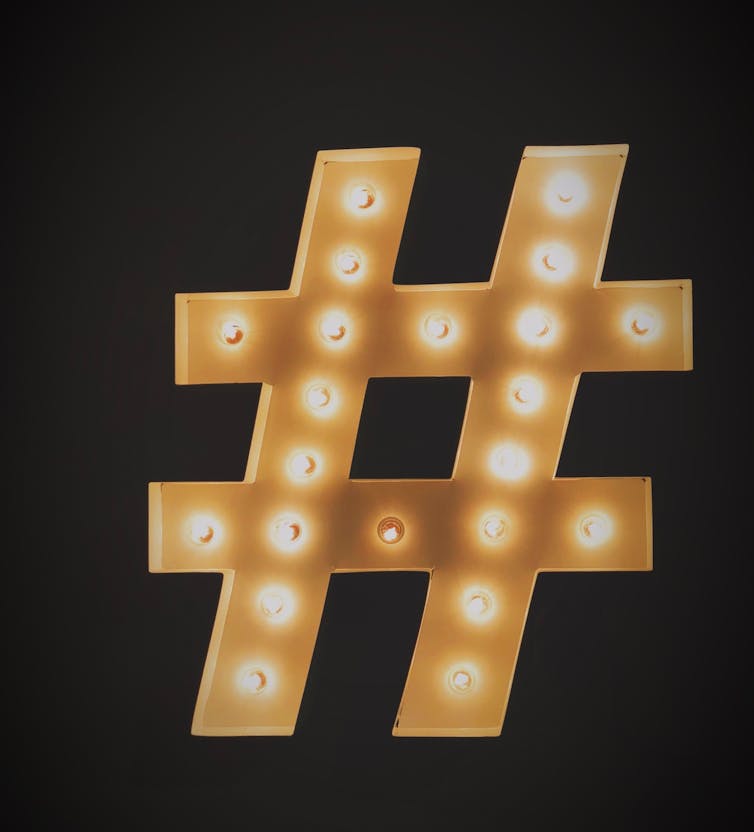10 Relationships
Expressions of and searches for love and sexuality pervade all corners of the web today, particularly the world of mobile applications. If there is one area of life that we can say has been deeply changed by technology today, it is the conflagration of love, sex, loneliness, and marketing which we will simply call online dating.
Sexting and selfies
As always, history reveals that the changes enacted through technology on online dating have been gradual; that there is a great deal of convergence between how we have loved and lusted in the past and how we do so now. For example, this video by the Atlantic Monthly provides examples of sexual texting or “sexting” style messages exchanged among lovers and lusters in generations and centuries past.

Selfies are a new genre of photography, and art, according to Jerry Saltz in this article for New York Magazine. They also may signify a new sense of self-reflection that is redefining romance and sexuality. For example, images of nude women have been circulated on every type of medium used in history. But in the age of selfies and sexting, women are now the most frequent photographers of the female form; the sexualizing gaze is directed at the self, and then shared with the world. In her article entitled Sexting as Media Production, Amy Hasinoff promotes the idea that sexting can be empowering for young women. She also unveils the complications when laws designed to punish people for circulating pornographic images and abusing children are applied to young people who are expressing sexuality over phones and online. As seen in the erotic photos just above, the online circulation of sexualized images is an old practice with new players.
How social media leads to self-obsession
Student Content
My 500-Word Story on My Unique Perspective on Social Media
Social media has always had a big impact on my life. Around the age of 11 I was invested in playing the games on Facebook. My mom got to the point where she was so tired of having to log into her Facebook for me to play the games that she allowed me to make my own social media page. This is what started the slope of my life into the social media world. My knowledge on social media is extensive. When I was entering high school Instagram had just become a very popular platform, and having started social media at 11, by 15 I had almost every social media there was. Though this was the age I became invested into making a good instagram. I followed , who posted their luxurious lives, and I strived to have mine resemble theirs.
This is when I began to develop a knowledge on editing photos. I downloaded an app called FaceTune where I learned the interworking’s of photo editing. I eventually got so good I could completely change the background of the photo and edit out anyone’s insecurities, even items in pictures. I also became invested in the Adobe editing world with an app called Lightroom. The Famous Influencers on Instagram I followed, were selling edit’s to photos that made your feed look a certain way. I was so obsessed with the concept of a color scheme, and all my photo’s looking the same on social media, that the photo’s I posted didn’t even resemble me.
My whole social media, which I had become a pro at creating a whole life in, was a complete sham. I had become so good a using social media, that I wasn’t being my self. I had looked more at how many followers I had gained then the positive things I was doing in life. Social Media can consume a person, once you gain even the slightest bit of knowledge. That is what happened to me. Even before going to college, I had become obsessed with how my outfits looked, how many people commented, and how many likes I got on every photo. I would use my Instagram algorithm to see who was interacting, what the best times to post were, and what type of posts got the most likes. This lead to me having ‘photo shoots’ to get just the right picture, because I had to look perfect on Instagram.
The obsession with Instagram, is what lead me to being insecure about my body and the way I looked. I eventually had to take a step back and see that my knowledge and exposure to social media is what was consuming me. I needed to stop letting my world be revolved around getting a perfect picture, because I wouldn’t enjoy and experience since I was too focused on taking pictures. I really wish that I hadn’t had the exposure to social media that I did because I think I would have been a lot happier with my life if it weren’t for social media’s effect. I hope as I grow older I can start living in the moment and using less social media.
About the Author
Savannah Williams is a Communication Major at the University of Arizona. She is from Scottsdale, Arizona. Williams one day wants to open up her own business in her hometown.
Connecting to the network and infiltrating the tribe
A significant part of human social life is organized around who we form lasting romantic relationships with. The online world, once idealized as a place of anonymity and separation from offline life, now has networks devoted to replicating offline life online, and building networks of relationships. These interconnected relationships are what experts really mean when we talk about social networks, which sociologists began studying decades before online social networking sites existed.
Dating on Social Media: Authenticity Vs. Structure
Student Content, Fall 2020
Boyfriends and Social Media
Music: Spirit (Final) by Aritus, CC BY 3.0.
What Social Media Means to Me
For me social media has always been a safe space for me to be my authentic self. Starting it in the 5th grade, I had no intent to show off or impress anyone. I would post maybe five times a day and I wouldn’t even care what I posted about. However, I noticed recently that I have started to fold into the mix of overthinking instagram and thinking too much about the traditions within it.
Instagram is so big that it has its own culture, its own language, its own traditions. And as users we have the option to adhere to these or follow our own path. The societal pressure, and especially being 19, it’s hard to not just follow the status quo. I have tried to go down my own path of not caring what other people think about my profile, but over time it has gotten harder to not just post for me. You find yourself wanting to post to impress your mom, friends, and other acquaintances.
In my podcast I discuss with my boyfriend Alec, the peer pressure I felt of us posting about each other for the first time. As a guy, who despite his resistance, follows his own set of traditions on social media. We relayed how as a culture we perform or act on our posts. As a little girl the biggest deal to me was to be able to post pictures of my boyfriend as I got older because that’s what I saw my older cousins do and what I was looking forward to be able to do. When Alec and I were able to visit each other during the summer, I knew that we had to get the perfect photo for instagram. And for the most part there were great moments of just us living in the moment, which I really tried to stick with, but then I remembered the pressure I felt. This pressure stems from years of social anxiety and having my ow insecurities.
Talking with Alec made me realize how much power I give social media, and I think that goes with a lot of other people. We are given these standards or traditions and told to stick with them, and if we don’t we will be criticized. And I think that nowadays there is too much power that social media gets, power I no longer want to give. I mean, instead of enjoying time in front of the golden gate bridge with my boyfriend, I made us put up a facade that we were having a perfect time. And as much as it was great, it wasn’t perfect, because nothing is!
Overall, what I learned from this experience and being able to state it out loud was that I no longer want social media to have power over me. I want to be able to have freedom and express whatever I want. Whether that’s a political opinion, an outfit I would have otherwise not shown, or really goofy photos that I would have normally been too embarrassed to share. For the sake of my mental health and overall enjoyment of the app, I want to let social media be fun and not always have to follow the typical traditions that come with it.
About the Author
Alyssa De Leon is a current sophomore at the University of Arizona. She is a film and television major from northern California. She spends quarantine watching reality tv and baking.
Dating is important. It offers the rare invitation for someone unconnected with one’s social network to enter, at least temporarily. Dating can be the preface to an intimate relationship and potentially a lasting one. So this invitation can’t be extended to just anyone; we have to vet people before they can enter the inner sanctums of our lives, and biases can play significant roles in that vetting. The discomfort of this process for a new partner of a different race is captured in two films about a young black man coming to the home of the family of his white girlfriend: 1967’s Guess Who’s Coming to Dinner, and 2017’s Get Out, which explored these themes through the lens of horror. Yet even when dating does not end in horrific consequences, it is still a high-stakes activity.
The sequence for seeking someone special

In a 2014 article entitled From Facebook to Cell Calls, Yang and coauthors found that college students progressed through layers of electronic intimacy – different media chosen as benchmarks in the progression of a romantic relationship. When they were interested in someone, they began by connecting with a “crush” through Facebook, which allowed the “crush” to see who their admirer’s friends were and how the admirer looked, communicated, and behaved. The next layer was instant messaging – direct communication, but not as direct as the use of one’s “digits” or cellular connection. After instant messaging, they moved to the more intimate sanctum of text messaging. The final step was a face-to-face meeting. Overall this sequence of media they used followed a pattern: they began by performing in front of and viewing one another’s social networks, they then moved into more direct one-on-one communication before meeting in person.
Data in the above study was likely collected in 2011 or 2012. So what might people like the participants in Yang and coauthors’ study be doing to find romance now, five years later? College students today may be using some different platforms in their pursuit of new connections than the students in Yang et al’s study; Instagram is likely high on the list.
However, it is also likely that at least some of the pursuit of romantic interests that happened through different media in the past is now consolidating in online dating sites. The Pew Research Center published a report in 2016 about the growing number of Americans who have used online dating. They found that online dating usage by those aged 18-24 has nearly tripled since 2013 and usage by those aged 55-64 has doubled; other age groups’ use has increased as well.
Do dating apps do what we did before?
Online dating apps afford the presentation of ourselves to prospective friends, partners, mates, and hookups. On these apps, users’ imagery and self-description tend to be idealized, sometimes to the point of deception. Apps such as settleforlove.com have been developed around the desire for more honesty in online dating, but their market share has not been spectacular. It seems upfront honesty is not the best way to gather a public of potential lovers.
Do dating apps also follow the sequence found in Yang and coauthors’ study, moving from social and tribal to direct connection? That depends. Some apps leave out learning about someone’s social connections, relying instead on complex algorithms to calculate who might be a good match – even if scientific evidence does not show that these algorithms work. Others just speed through the sequence by facilitating immediate direct connection, and in some cases, quick sex. Some use the language of sociality like “tribe” and some connect you to matches through your social networks.
But we humans and our cultural norms still determine a great deal of how dating apps are used. Just as bias affects algorithms across the web, bias has been found to tip the scales on dating sites in favor of white men, to the detriment of groups including black women and Asian men. Sites and apps follow our leads as much as we follow theirs. And apps only go so far; dating apps today function more like online shopping than like relationship formation of the past. In the BBC Horizon film How to Find Love Online, the romance-focused anthropologist Dr. Helen Fisher says they are better called “Introduction services,” with the act of dating and the final vetting before it still conducted in person.
Mobile dating apps
Mobile apps are particularly influential in the world of online dating today. One of the pioneers was Grindr, a gay dating app. Bae, an up and coming site branded “for black singles,” was recently acquired by a company aiming to make it global. Her caters to queer women.
And then there is Tinder, the most popular in the US (although not the world) at the time of this writing, which has taken the heterosexual dating world by storm. There are many critiques of Tinder’s effect on heterosexual dating, however, including studies finding that it favors men’s usage norms over women’s. Tinder faces strong competition from numerous competitors for the US market, however, including a direct challenge – with a grudge – from a Tinder cofounder’s site, Bumble, discussed more below.
Connecting, Tinder, and the Social Media Coma
Student Content
My Perspective on Social Media Use
Living in this day and age, social media is used by millions and millions of people all around the globe. I enjoy using social media for purposes such as being social (obviously), keeping in touch with my friends and family, expressing myself, sharing some of my own personal thoughts, beliefs, and opinions, and having a platform for myself to share whatever I want, whenever I want.
Social media usage comes with many benefits and positives. However, there are also many negatives that come along with being on social media. In my own personal experience, I have gotten my feelings hurt over seeing people doing something without inviting me, leaving me to feel left out and excluded. Also, people tend to be very harsh and rude over social media because they are behind a screen and not face to face. Therefore, they may be more confident in the cruel words that they are typing. I try to use my social media as a positive additive into my life. I feel like there is already so much hate, judgement, and negativity in the world, so why should there be any more from being on social media (which is supposed to be fun)? Personally, I choose to follow accounts that preach positivity and lift my spirit, and then unfollow all the others that do the opposite.
Social media can also be very time consuming. Some days I have found myself buried in my phone on the couch or laying in bed for hours upon hours as the day wasted away. I like to call this action a “social media coma.” It is moments like those that make me feel guilty and ashamed that I actually spent countless hours on my phone, examining other people’s lives, when I am actually wasting my own by doing so.
Another aspect of social media that I do not participate in, unlike many high school students, college students, and young adults is online dating/ hooking up apps. The most popular one among this generation is Tinder. Tinder is a “dating” app where you basically judge someone in a matter of a few seconds on their looks, age, name, location, and biography (if they have one). Then, you either swipe right or left, depending on if you like what you see or not. If you match with someone, meaning both people swipe right on each other, then you can arrange plans to start talking, hanging out, or whatever else. I have an old soul and would much rather find a life partner in a more natural way… say maybe bumping into someone at the grocery store and locking eyes and feeling immediate sparks (very cliche and seen in almost every rom-com, I know)! I don’t think that there is anything wrong or shameful about Tinder or other dating apps, but I just choose to not be a part of them.
Overall, social media is very prevalent in today’s society. It can provide countless opportunities and knowledge, just at the click of your fingers. I think that using social media in moderation is a good thing to do. People should also be uplifting, supportive, and kind to one another over the screen to help make social media a healthier, happier, and safer environment.

About the author
Marissa Farhi is a college student at the University of Arizona. She loves to work out, spend time with friends and family, and eat avocado toast.
The paradox of choice
Some scientists and users are critical of online dating apps because of the wide selection they provide. As Aziz Ansari points out in this podcast episode, and in this article, for some people dating once meant choosing from an extremely small selection of people. He and the podcast host cite studies finding a “paradox of choice,” psychologist Barry Schwartz’s theory that the more selection we have, the less likely we are to choose something and feel satisfied with our choice – whether it is a partner or a jar of jam. And today? Thanks to these apps, users get exposed to a lot more jam.

For users in big cities, it is possible to swipe almost infinitely through prospects for dating and potential sex. As my friend Mary Franklin Harvin describes it, it gives “an air of disposability” to people. Nancy Jo Sales’ Vanity Fair article on Tinder goes further, claiming women have fewer orgasms in the numbers-game exchanges Tinder facilitates – and in these situations with so little intimacy or rapport for feedback, men do not learn the skills to be good lovers.
Many in the article linked above, including Sales, have charged that Tinder encourages a culture of harassment of women. That may be in part because the culture within the company has been the site of harassment. Tinder co-founder Whitney Wolfe left Tinder in 2014 after being sexually harassed there, received a settlement, and started Bumble.
But online dating sites, like most technologies, depend on humans to use them and shape their norms. To end with a ray of hope for those who feel they have to use Tinder, artists like Audrey Jones, Matt Starr, and Jarrod Allen use Tinder to make art. If nothing else, they remind us that humans can choose to use platforms in new ways – even if using them differently than the crowd can be lonely.
Core Concepts
selfies
a 21st-century genre of popular art and media production
layers of electronic intimacy
a term by Yang et al (2013) to describe how college students chose different media platforms as benchmarks in the progression of a romantic relationship
Sexting as Media Production
a 2013 article by Amy Hasinoff promoting the idea that sexting can be empowering for young women, and unveiling the complications that arise when laws designed to punish people for circulating pornographic images and abusing children are applied to young people who are expressing sexuality over phones and online
paradox of choice
psychologist Barry Schwartz’s theory that the more selection we have, the less likely we are to choose something and feel satisfied with our choice
Core Questions
Choose the best answer:
Question for Qualitative Thought:
Consider the layers of electronic intimacy discussed in this chapter, and then consider your own generation and subculture. What layers of electronic intimacy do people you know often go through as they try to get to know another person?
Related Content
4 tips for staying connected during coronavirus, from migrants who live far from family (by Lynette Arnold for The Conversation)

John Moore/Getty Images
Lynnette Arnold, University of Massachusetts Amherst
As social distancing and shelter-in-place orders are implemented to curb the spread of coronavirus, ever more people worldwide are separated from relatives, friends and loved ones. As of March 29, an estimated 229 million Americans, 60 million Italians and 1.3 billion Indians have been asked to stay home.
Forced separation, while new to most, is a fact of life for the world’s migrants. Still, many sustain close relationships with relatives through years, even decades, of physical distance.
As a linguistic anthropologist interested in the power of everyday language, I study how such families maintain relationships by analyzing recordings of their conversations. I worked with migrant families living stretched between El Salvador and the United States to record 75 hours of these conversations over four months.
I’ve identified four communication strategies of long-distance families that may help people in coronavirus-related isolation cope with physical separation and maintain social connection.
1. Nothing beats a good phone call
As millions more people rely on video-conferencing technology, they’re discovering what migrant families have long known: Video communication can be draining – physically, mentally and emotionally.

Stefano Guidi/Getty Images
For work-related video conferencing, the challenges include preparing yourself and your immediate surroundings for broadcast. For families, studies show, seeing those you love on video can make feelings of separation more intense, increasing the yearning to be together.
Text messages and other written communication, on the other hand, can feel too impersonal and may not be accessible to those – like young children – who can’t read, or to people with visual impairments.
That’s why the families in my research rely on phone calls for almost all of their communication. Calls are intimate. Hearing a loved one’s voice can convey emotions without the constant visual reminders of separation.
2. Communicate to connect
Communication isn’t just about conveying information – it’s also a way of caring for others. The long-distance families I study use small acts of communication to reinforce their intimate bonds.
Take greetings, for instance. In the phone calls I have analyzed, greetings almost always sound something like this: “I send greetings to you, to my grandchildren, to my daughter-in-law and to all those who surround you.”
Such elaborated greetings articulate family relationships that stretch across space. They are an instance of the everyday ritual that linguistic anthropologists have shown to be powerful communicative tools in societies around the world.
As migrant families speak these greetings over and over, in every conversation, they continually create and re-create connections despite distance. That’s because communication has consequences beyond the moment in which it happens. Research shows that migrant families are aware of how the effects of conversations accumulate over time.
3) Manage conflict carefully
These long-distance relatives have also developed strategies for communicating about conflict, which is inevitable in any family, and minimizing its consequences.
By and large, the conversations I analyzed avoid explicit disagreement and signal concerns in subtle ways.
For instance, if relatives in El Salvador don’t have enough money to cover their day-to-day costs, they embed indirect complaints as they recount family news. A story of their father’s visit to the doctor, for instance, will include a quote from him lamenting that he cannot afford his new prescription.
This communication strategy puts family problems on the table for discussion without placing blame.
4) Celebrate the past – and a future together
Communication has the ability to span not just distance but time.
The migrant families I study often reminisce about times when they lived together, recalling humorous incidents or past mishaps that lead to shared laughter. This isn’t just nostalgia: Separated relatives leverage these shared memories to imagine what it might be like to live together again.
For example, two sisters talk about how they once shared household tasks, using these memories to imagine a scenario in which the migrant sister could play with the young niece she’s never met.
The future is uncertain for migrant families. Many hope and plan to be together again, but restrictive immigration policies often prevent relatives from reuniting or even visiting each other.

Paul Ratje/AFP via Getty Images
For those locked down by coronavirus, the isolation should end in weeks or months. In the meantime, thoughtful communication can help sustain long-distance relationships.
And even after this crisis passes, I hope these lessons from migrant families will continue to enrich conversation and deepen social connections.
[Insight, in your inbox each day. You can get it with The Conversation’s email newsletter.]![]()
Lynnette Arnold, Assistant Professor of Anthropology, University of Massachusetts Amherst
This article is republished from The Conversation under a Creative Commons license. Read the original article.
Twitter and the way of the hashtag (by Jean Burgess for The Conversation)

Professor and Director, Digital Media Research Centre, Queensland University of Technology

Perhaps no single character has been as iconic a symbol of Twitter as the now-ubiquitous hashtag.
The syntax of the hashtag has a few simple rules: it consists of the hash symbol (#) immediately followed by a string of alphanumeric characters, with no spaces or punctuation.
It is used routinely in social media communication across a number of platforms including Tumblr, Instagram, and even Facebook, but its most important point of emergence and polarisation has been in Twitter.

The hashtag remains most comfortable in Twitter, and it was Twitter that turned it into a highly significant, multi-functional feature. The hashtag has made its way off the internet, appearing regularly on television, in advertising, on products and on protest signs around the world.
From its beginnings as a geeky tool designed to help individual users deal with an increasingly fragmented information stream, Twitter made the hashtag a new and powerful part of the world’s cultural, social and political vocabulary.
The @ feature helped people organise into pairs and create conversational streams. The hashtag, which organises tweets into topics, publics, and communities, goes to the heart of a crucial question: how is the internet organised and for whom?
Read more:
Anger is all the rage on Twitter when it’s cold outside (and on Mondays)
Adding value
Although its use on Twitter was new, the # has a prehistory both as a punctuation mark and as part of internet communication. Imported from elsewhere, as was the @, the hashtag brought some of its prior conventional understandings with it.
Known as the “octothorpe” by typography experts, in early computer-mediated communication the hash or pound symbol was used to mark channels and roles in systems like Internet Relay Chat (real-time, online text messaging used as early as 1988). It therefore worked to both categorise topics and group users.

Shutterstock
The # also became closely tied to crowd-sourced content tagging systems. On the music-streaming site Last.fm, users could tag artists and songs. The site used these tags as information to “learn” about music, fuelling recommendations and radio streams, and laying the groundwork for Spotify and other apps’ current recommendation algorithms.
User-contributed tags were important on the Flickr photosharing website, where they helped direct people to images and to one another — a practice that was carried over to Instagram. Crucially, users could add as many tags to their Flickr photographs as they liked, creating a system that was less a taxonomy (an expertly ordered system based on exclusive, hierarchical categories) and more a “folksonomy” (a crowd-sourced one, based on inclusive tags and aggregation).

Folksonomical ordering, in the mid-2000s, was widely imagined as a more efficient, organic way of ordering content than categories or directories, and it was this model that underpinned the popular social bookmarking service del.icio.us.
The Flickr folksonomy of user-contributed tags was paradigmatic of the Web 2.0 ideology — marked by a shift from the web 1.0 idea that web development was about serving content to audiences to one where the goal was building architectures for participation of users (sometimes distinguished from passive website “visitors”) and the expectation that the user community’s activities would add further value.
Reddit’s systems for upvoting user-curated content, subreddits and modern Twitter’s aggregated trending topics are contemporary versions of this early tag-based co-curation model.
Read more:
Don’t just blame YouTube’s algorithms for ‘radicalisation’. Humans also play a part
A #solution to a problem
As far as we know, the hashtag’s use in Twitter was first proposed in mid-2007 by Chris Messina in a series of blog posts.
In Messina’s view, the hashtag was a solution to a need. At this time, it was still possible to see a public feed of every single tweet from a public account. Topical conversations among people who did not follow one another were incoherent at best.
The users advocating for the hashtag were technically proficient (many of them also developers) with an active online presence, who positioned themselves as participants in a community of lead users.
While some users were experimenting with hashtags, Messina’s vision for them didn’t catch on widely until a particularly acute and sufficiently significant event — the San Diego brushfires in 2007.
With this event, Messina achieved wider take-up of the hashtag as a tool for coordinating crisis communication by actively lobbying other lead users and media organisations.
#sandiegofire 300,000 people evacuated in San Diego county now.
— Nate Ritter (in 🇲🇽) (@nateritter) October 23, 2007
Journalist Nick Bilton relates an encounter between Twitter founders Biz Stone and Ev Williams and Messina, at the Twitter offices, as follows:
‘I really think you should do something with hashtags on Twitter,’ Chris told them. ‘Hashtags are for nerds,’ Biz replied. Ev added that they were ‘too harsh and no one is ever going to understand them.’
Culture clash
Twitter had begun wrestling with the problem (which still haunts it) of conflict between the cultures of expert users that made the platform work for them and the new users they alienated but whom the company badly needed to sustain its growth. The hashtag provoked contestation between Twitter’s different cultures as it was taken up both for the serious uses – such as disaster and professional discussion Messina had envisioned – and to create sociable rituals and play.
From the beginning, there was debate around the right way to use hashtags.
As Messina’s historical documentation and that of others show, there were several competing models of how and why to coordinate Twitter activity as the flow of tweets started to grow beyond an easily manageable size.
Perhaps the # was a tag, designed to help organise collections of tweets on shared topics? Or was it a way to form channels, or groups of users interested in those topics?
Underlying these different models of what the hashtag could become were different models of Twitter: as an information network, a social networking site or online community, or a platform for discussion and the emergence of publics (organised communities).
Such ideas were still new and hotly contested at the time. Though the informational seems to have won out over the conversational model of Twitter, the hashtag remains, and is used for an astonishing array of social, cultural, and political purposes — some of them vitally useful, not all of them serious, and some of them downright toxic.
The website Hashtags.org was launched in December 2007, and provided a real-time tracking and indexing of hashtags before Twitter implemented search. Participants at an event, for instance, could visit the website to see other tweets from the same event.
The hashtags in the earliest archived version of the Hashtags.org homepage, from April 2008, include a number of academic and tech conferences (#EconSM, #netc08, #interact2008) and sporting and entertainment events (#idol, #yankees, #REDSOX), and tweet categories (#haiku). Hashtags were used for coordinating discussion topics and finding like-minded users (#seriousgames, #punknews, #college, #PHX), brands and products (#gmail, #firefox), and even people (such as Wired journalist #ChrisAnderson).
Back then, the most tweeted hashtags were represented as amassing tweets numbering in the tens or at most hundreds, a reminder of the modest scale of Twitter at the time. Uses of hashtags, such as for humour, activism or second-screen television viewing, had yet to emerge.
More than chatter
Ever since those early debates about whether Twitter needed “channels” (of topics) or “groups” (of users), hashtags have continued to play both structural and semantic roles: that is, they coordinate both communities and topics, helping users find each other and encounter a range of contributions to the discussion of issues and events.
The hashtag has fostered the rise of Twitter as a platform for news, information and professional promotion, yet the forces that allowed hashtags to become influential are deeply rooted in its conversational and sociable uses.
Bad news out of #Australia this #WildlifeWednesday: areas of New South Wales ravaged by #bushfires have suffered a 90% reduction in ground-dwelling species. Academics have suggested more than 800 million animals were killed across NSW alone: https://t.co/gkaeBMVcKF pic.twitter.com/jIQvHgedw2
— Melissa Cristina Márquez (@mcmsharksxx) June 24, 2020
The capacity of the hashtag to help people navigate real-time events such as disasters, protests and conferences, and to expand and solidify social connections and community, proved particularly ideal for social movements and activism.
Such uses have in many ways come to define both the hashtag and, increasingly, Twitter itself. Perhaps the most notable confluence of hashtags and bodies-in-the-street activism has come from #Blacklivesmatter. As US academics Deen Freelon, Charlton D. McIlwain, and Meredith D. Clark document:
The Twitter hashtag was created in July 2013 by activists Alicia Garza, Patrisse Cullors, and Opal Tometi in the wake of George Zimmerman’s acquittal for second-degree murder of unarmed Black teenager Trayvon Martin.
For more than a year, #Blacklivesmatter was only a hashtag, and not a very popular one: it was used in only 48 public tweets in June 2014 and in 398 tweets in July 2014. But by August 2014 that number had skyrocketed to 52,288, partly due to the slogan’s frequent use in the context of the Ferguson protests. Some time later, Garza, Cullors, Tometi, and others debuted Black Lives Matter as a chapter-based activist organization.
It’s easy to dismiss hashtag activism as a form of slacktivism rather than real political engagement. But the rise of #Blacklivesmatter and its ties to street protests and unjust policing serves as an important reminder of the embodiment and liveness of many events that might look merely like “data” or chatter when viewed as hashtags.
I don’t think people understand.
This is NYC right now. Day 30. In a row.
The #BlackLivesMatter movement is just getting started.pic.twitter.com/O45EhLdRU5
— Read Let This Radicalize You (@JoshuaPHilll) June 30, 2020
This is an edited extract from Twitter: A Biography by Jean Burgess and Nancy K. Baym, published by NYU Press.
Nancy K. Baym is Senior Principal Researcher, Microsoft Research and Research Affiliate in Comparative Media Studies/Writing, Massachusetts Institute of Technology, Cambridge Massachusetts.Jean Burgess, Professor and Director, Digital Media Research Centre, Queensland University of Technology
This article is republished from The Conversation under a Creative Commons license. Read the original article.
Media Attributions
- image-5fd18ed6f4181 © Savannah Williams adapted by Crystal Brannen is licensed under a CC BY (Attribution) license
- ADL_image-5fd1a277c6a79 © Alyssa De Leon adapted by Emily Gammons is licensed under a CC BY (Attribution) license
- cell-phone-791365_640 © kaboompics is licensed under a CC0 (Creative Commons Zero) license
- MF_image-5fcfd9abad3a8 © Marissa Farhi adapted by Diana Daly is licensed under a CC BY (Attribution) license
- 418px-Young_Romance_No_31_1951a is licensed under a Public Domain license
a 21st-century genre of popular art and media production
a 2013 article by Amy Hasinoff promoting the idea that sexting can be empowering for young women, and unveiling the complications that arise when laws designed to punish people for circulating pornographic images and abusing children are applied to young people who are expressing sexuality over phones and online
a term by Yang et al (2013) to describe how college students chose different media platforms as benchmarks in the progression of a romantic relationship
psychologist Barry Schwartz's theory that the more selection we have, the less likely we are to choose something and feel satisfied with our choice

